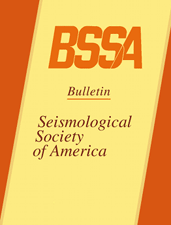
Ivan Wong, Patricia Thomas, and Nora Lewandowski of LCI have authored the technical paper “Assessing the seismic hazards in Jamaica incorporating geodetic and Quaternary fault data” with Rich Koehler of the University of Nevada at Reno. The paper has been published ahead of press and will appear in an upcoming issue of the Bulletin of the Seismological Society of America.
The paper presents a probabilistic seismic hazard evaluation of the Island of Jamaica. Unlike most of the previous probabilistic seismic hazard analyses (PSHA) which have relied almost solely on the historical earthquake record, we have evaluated the seismic hazard in Jamaica incorporating the known Quaternary faults. Although only the Enriquillo-Plantain Garden (EPG) fault has been the subject of paleoseismic investigations, we have estimated the fault slip rates and their uncertainties based largely on geodetic estimates. The faults included in our analysis are primarily the east-west-trending strike-slip faults that accommodate most of the relative Caribbean-North America plate motion including the EPG, Rio Minho-Crawle River, South Coast-Aeolus Valley, Cavaliers, Duanvale, Walton, and Siloah fault zones. The Wagwater thrust was also included. We calculated the probabilistic hazard at five cities/towns on the Island using the NGA-West2 ground motion models. For a typical building code return period of 2,475 years (International Building Code), the peak horizontal ground accelerations range from about 0.3 to more than 0.7 g with the highest hazard at sites adjacent to the major strike-slip faults, including the Kingston metropolitan area. Comparisons with previous studies that were based principally on historical seismicity indicate that those analyses underestimate the seismic hazard in Jamaica, and suggest that even broad constraints on crustal fault slip rates improve hazard estimates for the Island.
